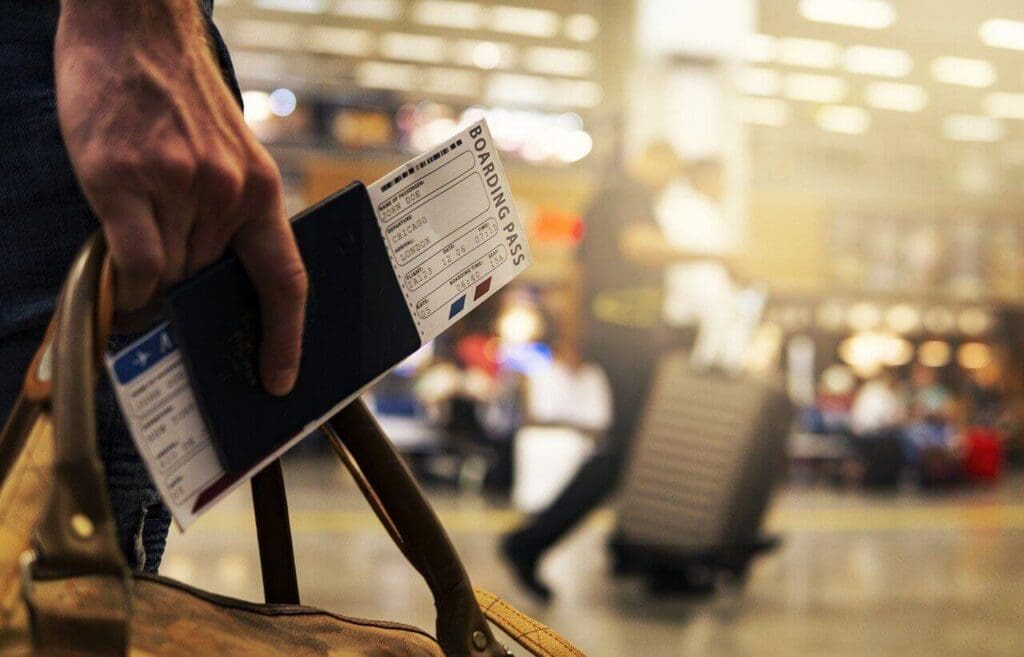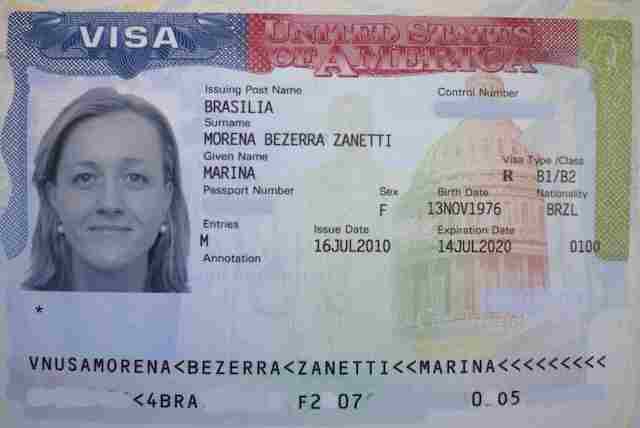The f-2 visa is a dual intent visa, meaning you can return to your home country while working in the United States. This is one of the main reasons why so many foreign students choose to study in the United States.
However, F1 visa and their F-2 visa holder-dependents face challenges once they end up in the USA, including issues surrounding how they can stay longer than the designated date for departure as contained on their visa. This article will discuss everything you need to know about F-2 dependent visas.
What Is An F-2 Visa?
F-2 visa is a nonimmigrant visa application granted to the dependants of individuals who hold an F-1 student visa. This visa is meant to provide a pathway for the spouse and minor children of F1 visa holders to live in the United States while their primary family member is pursuing their studies. The F-2 visa allows dependants to accompany their F1 visa holder and stay in the US for the duration of the latter’s study program.
F2 visa holders are not authorised to work in the US but can engage in various activities such as volunteering, part-time studies, and leisure activities. However, the primary purpose of the F-2 visa is for dependants to travel to the US with their family members and not engage in any employment activities.
Who is Eligible for F-2 Visa?
To qualify for an F2 visa, you must:
- Be the spouse of a person who has obtained a degree or certificate from an institution of higher education, is studying at such an institution, or has been accepted for lawful permanent residence as an immigrant;
- Be at least 18 years old as a visa applicant
- Have been admitted to the United States as an F-1 nonimmigrant student;
- Have maintained legal status as an F-1 or m-1 visa nonimmigrant student for at least one year preceding your application for admission into the United States.
Things You Need to Know About F-2 Visa Requirements
- The F2 visa is a dependent visa for spouses and children of the primary F1 visa holders.
- The F1 visa holder must be a full-time student in a US academic institution.
- F-2 dependents must show proof of financial support and be accompanied by the F1 visa holder.
- Dependents of F-1 visa holders are not allowed to engage in full-time employment but may engage in part-time on-campus work.
- Dependents must maintain valid f-2 status and comply with all visa conditions.
- F2 visa applicants must provide proof of relationship with the F1 visa holder.
- F2 visa applicants must undergo a visa interview appointment at the consulate.
- F2 visa duration is tied to the primary F1 visa holder’s length of stay in the US.
How To Apply for an F-2 Dependent Visa
The F-2 dependent visa is a nonimmigrant visa that allows the spouse and any unmarried children under 21 years old to accompany the F-1 student studying in the United States. F2 visas are directly related to the validity of the duration of time as the f1 applicant.
Below is a step-by-step guide on how to apply for the f-2 visa
- You submit a Form I-20 from the primary F1 visa holder’s school in order to apply for an F-2 visa.
- Complete the nonimmigrant visa application form (DS-160).
- Pay a visa issuance fee.
- After paying the f2 application fee, you need to schedule a visa appointment for a consular interview to state the purpose of the visa you’re applying for.
- Prepare supporting documents, including proof of relationship to the F1 visa holder, proof of financial support, and evidence of compliance with visa conditions.
- Attend the consular interview.
- After the interview, if the visa is approved, pay the visa issuance fee and wait for the F2 process to be completed. The processing time for an F-2 visa at a U.S. embassy may take 7 days to a few months, so you may need to check at the consulate occasionally before obtaining an F2 visa.
- After a successful F2 visa processing, F2 visa holders can enter the U.S. within the validity period.
- In case of necessity, you may apply for a change to circumvent the restrictions on f-2 dependent status.
What are the Restrictions on F-2 Visa?

It must be noted that there are significant restrictions on F-2 visas. F-2 visa holders must abide by the following restrictions:
- The F2 visa is not a US work visa. Holders cannot work in the United States.
- They can only attend school with a student visa (F-1 visa).
- They can’t apply for a U.S. visa or permanent residence (green card).
- They can leave the United States for up to 180 days per year (this includes travel for business or pleasure).
- If you want to spend more time outside the United States than that, you’ll need to apply for an F-1 visa and change your status from F-2 to F-1.
- If you want to take a vacation longer than 180 days but less than one year, you should apply for an F-3 visa (student’s spouse) or J-2 (f-2 spouse and children) while still in F-2 status.
Can You Change from an F-2 to an F-1 Visa?
The F-2 visa is a dependent visa for the spouse and minor children of an F-1 student visa holder. While the F-2 visa allows dependents to accompany the F-1 student in the United States, it also imposes certain restrictions, including the prohibition of paid employment. However, there may come a time when the F-2 visa holder wants to engage in academic or career pursuits and may apply for and obtain approval for a change to an F-1 student visa.
The process of changing from an F-2 to an F-1 visa involves several steps and requires careful planning, which are outlined below;
Step 1: Meet the Eligibility Requirements
The first step in changing from an F-2 to an F-1 visa is to determine if you are eligible. The following are prerequisites to qualifying for an F-1 visa. :
- Be accepted into a full-time academic program at a SEVP (Student and Exchange Visitor Program) certified school.
- Have sufficient funds to cover tuition and living expenses for the entire duration of your studies.
- Have a clear intention to return to your home country after completing your studies.
Step 2: Obtain an I-20 Form from Your School
Once you have determined your eligibility for an F-1 visa, you must obtain an I-20 form from your school. The I-20 form is a certificate of eligibility for nonimmigrant student status and is required for the F-1 visa application process. To obtain the I-20 form, you must provide the school with evidence of your financial resources, such as bank statements or a letter from a sponsor.
Step 3: Submit the F-1 Visa Application
After you have obtained the I-20 form, you can submit the F-1 visa application. The F-1 visa application process involves completing the online visa application (Form DS-160), paying the visa application fee, and scheduling an interview at the U.S. embassy or consulate in your home country.
During the visa interview, you will be required to present your I-20 form, evidence of your financial resources and proof of your intention to return to your home country after completing your studies. The consular officer will also ask questions about your academic and professional goals and may request additional information or documentation.
Step 4: Reenter the United States as F1 student visa holder
Once your F-1 visa has been approved, you must reenter the United States using the F-1 visa. You will also need to provide the school with proof of your F-1 visa approval and register for classes.
Step 5: Maintain F-1 Status
Once you have changed from an F-2 to an F-1 visa, it is important to maintain your F-1 status. This involves meeting the requirements of your academic program, maintaining sufficient funds, and adhering to the regulations set forth by the SEVP. Failure to comply with these requirements can result in losing your F-1 visa and your ability to study in the United States as an international student.

Processing Time For F-1 visa
The U.S. Department of State has to ensure the visa status is complete and accurate before they approve it. Sometimes, the consulate may need more information or documents to review your case.
Once you have completed the application process, your appointment will be scheduled at the U.S. consulate closest to you. You must submit all required documents with your application and pay the required fees (unless you qualify for a waiver).
The processing time it takes for a consular officer to review your application varies from person to person and from case to case. If you are applying for an F2 dependent visa, it will take longer than if you are applying for an F-1 visa because there are more requirements for F-2 visas than F-1 visas. It could take anywhere from 30 days up to 1 year or more for your visa application to be approved by U.S. Citizenship and Immigration Services (USCIS) and may also cost you some visa issuance fee.


